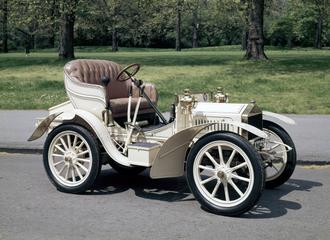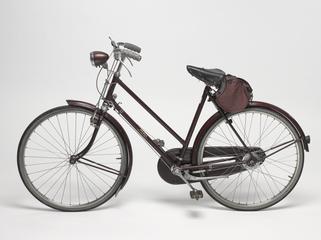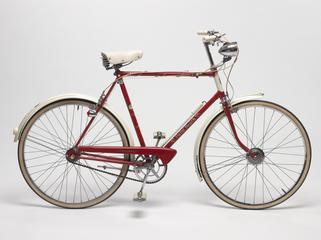
Acetylene generator
- Made:
- 1913

Standard dissolved acetylene outfit for supply of gas to motor vehicle lamps and engine starting device. Made by the Acetylene Illuminating Co. Ltd., 1913
Acetylene gas compressed alone is dangerously explosive, but it was found by Messrs. Claude and Hess, in 1897, that acetone would dissolve many times its own volume of acetylene, and that the compressed solution could be safely handled. This means of storing acetylene was further made practically available by filling the containing vessel with a porous material which absorbs the solution, and in this condition it forms a very convenient means of supplying the acetylene lamps of motor vehicles, etc., with gas. The porous material used was patented by the lenders in 1910.
The gas is purified and introduced into steel cylinders, which are tested to 800 lb. per square inch; when filled to a pressure of 10 atmospheres they hold one hundred times their own volume of gas. The standard cylinder holds 20 cub. ft. of gas and as soon as the valve is open, pure, cool and dry acetylene is given off until the cylinder is exhausted. They cylinder is fitted with a reducing valve, which lowers the pressure to that suitable for the burners, and also with a pressure gauge, which indicates the state of the contents of the cylinder/ The cylinder is fixed in a box, designed to be carried on the footboard of a car, and its neck is held by a clamp that also forms the outlet connection. When empty, the cylinder is removed and replaced by a full one, which can be obtained at one of a large number of depots. The complete car outfit weighs 40 lbs; a smaller size is made for motor-cycles.




